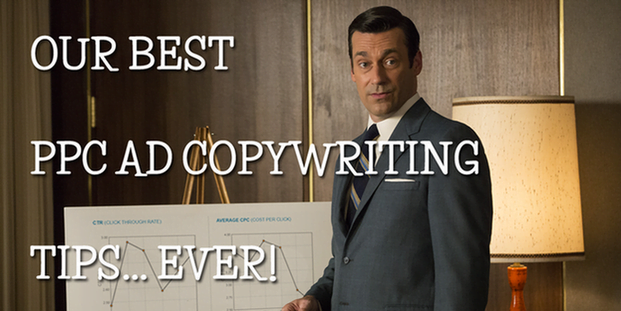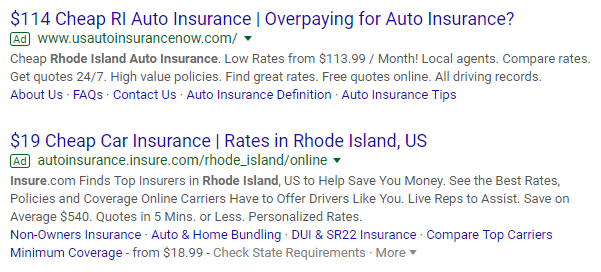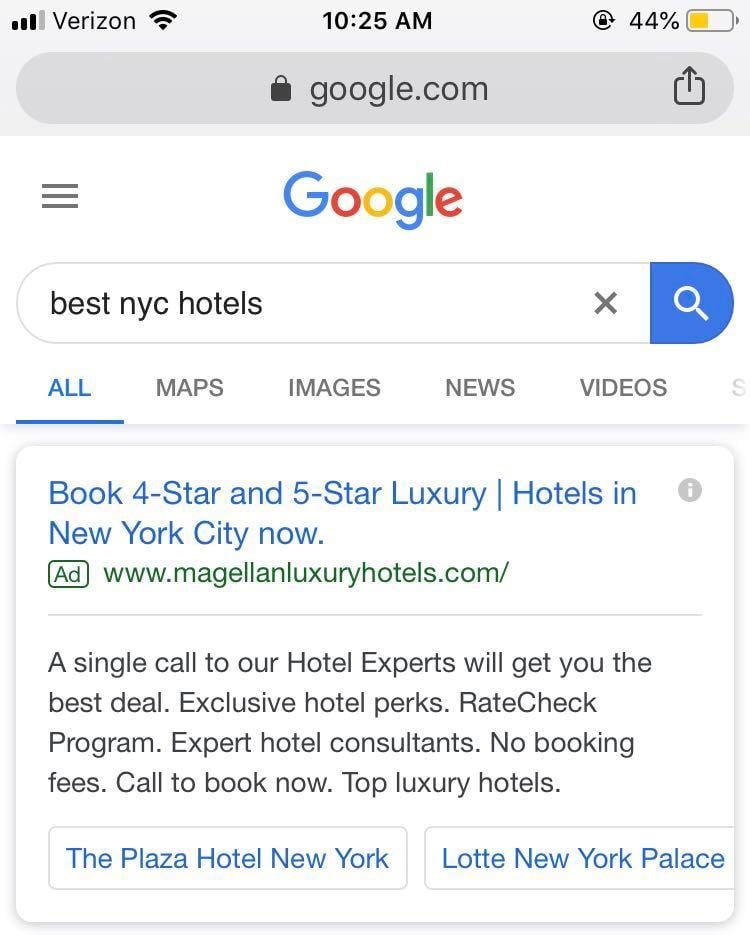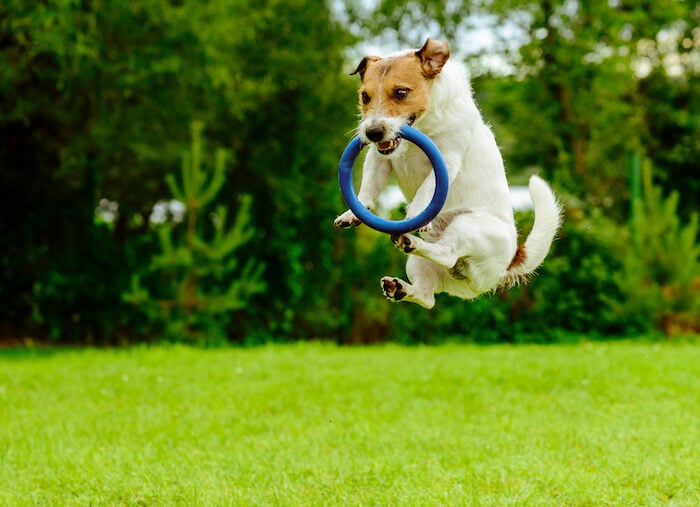Our 8 Best Ad Copywriting Tips EVER!
Digital marketing and PPC move incredibly quickly. However, for all the technological innovations and new features we see on a regular basis, there’s one element that remains crucially important regardless of changes in the platforms, tools, and technology – writing ad copy.

It doesn’t matter how many of AdWords’ bells and whistles you’re currently using – if your ad copy sucks, you’re not going to see the return you hoped for. Fortunately, the PPC experts here at WordStream know a thing or two about how to write badass ad copy, and in today’s post, we’ll be sharing our best ad copywriting advice ever.
A note before we get started…
There are a number of PPC ad writing tips and best practices that I’m going to go ahead and assume you’re already following, such as actually using keywords in your ads (you laugh, but so many advertisers don’t), and following Google’s policy guidelines (tHiS iSnT aLlOwEd). With that out of the way, let’s roll up our sleeves and get to the nitty-gritty of writing awesome ad copy.
1. Mirror the user’s objective
Nobody clicks on an ad because they think, “Wow, what a cool ad.” They click ads because they want to accomplish something and solve a problem. To this end, one of the most effective copywriting strategies at your disposal is to mirror the user’s goal in your ad copy.
When you sit down to write your ads, think of the user and what they want to accomplish – then phrase your ads in a way that directly appeals to this desire.

This Carvana ad, served for the search query “sell my car,” is a great example of this principle.
The first headline perfectly reflects what the user is trying to accomplish—you need to sell your car, and Carvana wants to buy it. Further, they make effective use of the second headline by offering the additional benefit of picking up your car themselves.
Finally, Carvana uses the description to highlight the simplicity of the process and the added bonus of getting your money the same day.

I’ll give you $20 right now.
However you choose to do it, keep the end goal of your user in mind when writing your ad copy. Help your prospects visualize solving their problem by using your business.
💰 Ready to hit the jackpot of ad copywriting tips?
Free guide: 10 Tricks to Get the Click: How to Write Exceptional PPC Ad Copy
2. Include numbers or statistics in your headlines
Advertisers will do practically anything to get you to click on their ads, but all they really need to do is make your life easier, cut the crap, and get to the point. An excellent way to do this is by including numbers or statistics in your ads, preferably in the headlines.

The two ads above for car insurance quotes in Rhode Island (where I happen to be as I write this) both feature plenty of actual numbers not only in the headline, but in the body copy as well. Although neither of these companies are as well-known or have the brand recognition as brands like Progressive or State Farm, they do offer some compelling figures in their ads (even though the way some people drive here in Lil’ Rhody makes me question how these speculative quotes could possibly be so low).
Although this can be a remarkably effective way to make your ads stand out, it should be used carefully. Take a look at this example for a custom T-shirt printing service:

In theory, this should be a great ad because it mentions upfront—in the very first few characters of the headline—how cheap these custom-printed shirts can be. However, this can also be a copywriting mistake if it raises more questions than it answers. For example, these shirts might be very affordable, but how good can they be for less than $2 per shirt? As a hypothetical prospect, I’m already questioning the quality of the product before I’ve even clicked through, which isn’t the desired effect.

SHUT UP AND TAKE MY MONEY
Most prospects have an idea of how much they’re willing to pay for something long before they even consider clicking on an ad, so including figures or statistics in your ads helps them make a decision when evaluating your ad with a competitor’s ad.
3. Appeal to users’ sense of entitlement
This may sound like preying on the selfishness of your prospects—because it is. Without inadvertently sounding like a grumpy old man yelling at kids to get off my lawn, we live in an increasingly selfish society in which many people exhibit a blatant sense of entitlement. As unpleasant as this can be, it can prove a valuable opportunity for advertisers savvy enough to take advantage of it.

The ad above, for a divorce and personal injury lawyer, expertly capitalizes on this sense of entitlement. The phrasing of the headline (“To Protect Your Best Interests”) immediately appeals to the notion that the prospect deserves something—a shrewd tactic for a situation as emotionally charged as a divorce.
This technique is particularly prevalent in the legal sector, as many people who file lawsuits do so in the staunch belief that they’re owed something. In many cases, attorneys and law firms leverage the inherently adversarial nature of legal proceedings to create highly provocative ads that can be very persuasive—and appealing to a sense of entitlement is an excellent way to provoke an emotional reaction in your prospects. Speaking of which…
4. Include emotional triggers in your ads
When it comes to using psychology in your copywriting, nothing spurs people into action like a powerful emotional response—especially online. This principle is what makes clickbait so effective; people read something, experience a strong emotional reaction to it, and then click through. This technique is one of the most powerful at your disposal when writing PPC ad copy.
There, there, Donna – don’t cry
The emotional responses you can try to provoke will depend on what you’re offering and the desired effect you want this emotional reaction to have on your prospects. Negative emotions, such as anger, disgust, and fear can provoke an incredibly powerful response in the reader, but it can be a challenge to balance this reaction with the rest of your messaging—you don’t want the negative emotional reaction to carry over into perceptions of your products or brand.
Let’s take a look at an ad for a particularly delicate, potentially emotional service—a site that helps people determine whether their husbands are having affairs:

This ad is really interesting, and a great example of how subtle leverage of emotional triggers in your ads can be highly compelling. Firstly, the ad makes its primary benefit clear, namely that simply by entering a name the searcher can find information ranging from dating profiles to criminal records—quite the comprehensive search indeed, and the kind of armchair detective work that an unfaithful husband might not expect.
Similarly, positive emotional triggers, such as affirmation and humor, can be highly effective at prompting people to click on your ads—but they can be tricky to implement well due to the subjective nature of these emotions (especially in the case of humor).
This technique doesn’t have to be particularly overt, and you don’t necessarily need to outrage potential customers to get their attention. In fact, sometimes, a more subtle copywriting approach can be just as effective, as this ad demonstrates:

The ad above manages to stimulate an emotional response while using aspirational language to entice prospects to click. This type of ad may have been well-suited to a negative emotional trigger, but the advertiser has cleverly opted to take a more inspirational approach to a sensitive topic—body image—to get its point across.
Free guide >> The 120 Best Words & Phrases for Marketing with Emotion 😍
Of course, sometimes, taking a more direct approach can be the best way to go, as this ad for a law firm specializing in DUI cases demonstrates with this ad:

In this example, fear—or, at the very least, uncertainty—is the primary emotional trigger (“Save Your License & Avoid Jail”), and it’s right there in the headline, a very effective tactic.
Related: Get tips for direct response copywriting from our friends at LocaliQ to drive action from your ads.
5. Create unique, keyword-rich display URLs
Many advertisers overlook the potential impact that a display URL can have on the success of their ads. Newcomers to PPC may not even realize that the display URL (the URL that appears in their ads) and the destination URL (the actual URL of the page to which visitors are directed upon clicking an ad) can be different.
The display URL can serve two purposes – it can be something more interesting and relevant to the copy of your ads, and it can (and should) contain your top keywords. Even if your destination URL doesn’t contain the keywords you’re bidding on, your ads can still appear in search results if you include them in your display URL.

The example above makes good use of the display URL, which suggests that the prospect will be taken to a product page dedicated to security cameras. It looks better than a generic homepage URL, and gives the advertiser another opportunity to appear alongside the search term.
Before making your ads live, be sure to give some thought to your display URLs and how they can reinforce the messaging of your ads.
6. Prioritize your best copy
Last summer, Google responded to the growth in consumer device size and the demand for instantaneous solutions by further expanding your text ads—adding an extra 30-character headline and an extra 90-character description line.
At the time of wide release, Google reported that these new, up-to-300-character text ads drove 15% more clicks for advertisers. Sounds perfect, right?
Well—almost perfect. As powerful as it is to add more than 100 additional characters to your text ads, that doesn’t translate universally across devices. On smaller devices, like smartphones and mini tablets, the screen size can’t accommodate both a third headline and a second description line.
As such, when writing your text ads, it’s wise to frontload your best ad copy into the first two headlines and the first description line. That way, you can be sure you’re always serving compelling messages to users—regardless of their device preferences.

Here, because I was using my desktop, Google served me all three of KAYAK’s headlines. Nonetheless, the KAYAK copywriters came prepared for smaller screens. Although the inclusion of the branded website in the third headline does help from a recognition standpoint, it’s certainly not essential information. The first two headlines, on the other hand, are much more important to the ad.
And when I search the same query on mobile…

…only two headlines. It’s a different advertiser altogether, but I think you see my point.
Still not sure what your best ad copy is? Check out the most common Google ad copy mistakes to avoid here!
7. Preemptively respond to common objections
Even if you’re operating in a crowded market with many competitors, oftentimes the choice between you and a competing business will come down to one of two objections – how much it’ll cost, and how much hassle it will be. Fortunately, you can preempt both of these common obstacles with a little forethought and some smart copy.
Take a look at this example ad for the search query “affordable home insurance:”

Obviously there are dozens of very large companies offering home insurance, and so differentiating yourself in this particular market could be pretty tricky. However, EverQuote has done a pretty good job of making this ad compelling. Note that the very first copy in the headline—a price—is “$97,” which helps overcome prospects’ fear of being gouged for insurance.
The ad above was actually beaten to position one by the following ad:

This ad does nothing to alleviate my apprehensions about searching for a home insurance quote. Sure, it mentions that a quote will be free, but I’d expect that from any home insurance provider. It doesn’t tell me how much I’ll actually be spending.
8. Focus on the benefits
Remember how we discussed that we live in an increasingly selfish society? This should never be far from your mind when writing ad copy, especially when it comes to the body copy itself. Nobody cares about why your company is supposedly awesome. They only care about how you can make their lives easier.
Let’s take a look at some examples of this principle in action. It’s worth noting at this point that one reason I’ve included so many examples from the insurance industry is because of its intense competitiveness and high CPCs, as well as the wide variance between ad copy from one company to another.


The first ad focuses almost exclusively on how their services benefit me as a potential customer. It tells me that their plans work with any licensed veterinarian and include coverage for hereditary health problems my pets might have. It goes on to assure me that my pet will be covered for life and that his or her age doesn’t matter.
The second ad is significantly worse. The headlines are okay; including a call to action with a slight sense of urgency is a fine practice. It’s in the description that things go south for MOAA. The only benefit—if you can even call it that—is that MOAA members choose the coverage they want for their pets.
Um, yeah—that’s the whole point. It’s a given that MOAA members have that liberty. This ad is a complete waste of description space.
It’s worth noting that the second ad could very well convert like gangbusters—I’m sure there are literally thousands of ads out there that don’t follow PPC best practices and still convert very well. That doesn’t mean, however, that advertisers should emulate these ads unless they’ve performed well under rigorous A/B test conditions. As with much of the conventional wisdom out there, real data from real tests is preferable to any “best practice,” even if it seems counterintuitive. Do what works for your business, not someone else’s, and always make decisions based on hard data.
Writing great PPC ads takes time and practice. However, by following the tips above and avoiding the mistakes of others, you can improve the quality of your ads (and your click-through rates, and your Quality Scores…) faster and see a greater return from your ad spend.
Summary: How to write effective ad copy for PPC advertising:
- Mirror the user’s objective.
- Include numbers or statistics in your headlines.
- Appeal to user’s sense of entitlement.
- Include emotional triggers in your ads.
- Create unique, keyword-rich display URLs.
- Prioritize your best copy.
- Preemptively respond to common objections.
- Focus on the benefit.
Want even more tips to up your copywriting skills? You can also find plenty of them in these 24 creative, competitive, click-worthy ad copy examples you’ll want to copy.









Comments
Please read our Comment Policy before commenting.